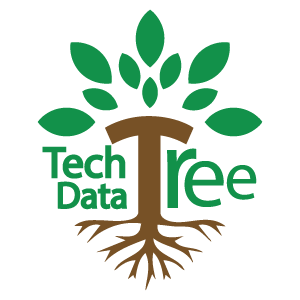A data-driven enterprise makes decisions based on facts and numbers. It does not guess. It looks at genuine data. This improves and strengthens the business. It leads to more success and money. In today’s world, this is critical. It enables businesses to remain relevant and expand. This type of thinking is known as fact-based innovation. It brings about significant improvements, known as transformative returns. Being data-driven is not only smart; it is the future. It is now a component of how smart firms operate. This is known as an evolving discipline.
What Are Data-Driven Organizations?
A data-driven business uses facts rather than hazard. It has a data-first mindset, which means that it checks the data before acting. This is known as the use of actual evidence. It helps the business’s activities and allows for greater choices. A data-driven company can grow faster and generate more revenue. It discovers new methods to improve by using game-changing info. According to studies, these businesses are more effective in finding and keeping customers. They also make more informed picks. Data-driven decision-making leads to greater business success and profitability.
Steps to Build Strong Data Driven Organizations

Creating a data-driven company begins with specific steps. Use a data-driven method and a solid business strategy. These assist teams in making sound choices on a daily basis.
Step 1: Start with Leadership Support
Strong C-suite leadership is the first step toward being data-driven. The CEO attitude must support using facts rather than feelings. When top leaders express an interest in data, others follow. This is known as executive sponsorship. It helps the entire team make sound decisions. A good top-down leadership strategy demonstrates that using data is not an option. It’s expected. Leaders must accept leadership responsibility for creating a culture of facts and outcomes. If leaders trust in data, the rest of the organization will, too. This marks the start of the journey to become a successful data-driven organization.
Leaders Must Believe in Data
Data-driven leadership entails making decisions based on facts rather than assumptions. Good leaders rely on evidence-based judgments to solve problems. They use numbers to choose the optimum path. A strong leader has a growth attitude. This suggests they believe the organization will always improve by learning from data. When leaders act in this manner, they set an example. Other employees will also begin using data. This creates a smart and strong workplace. Believing in data allows the organization to expand faster, make fewer mistakes, and stay competitive in a changing world. It all starts with leadership’s belief in numbers.
Encourage Openness and Learning
A learning culture makes people feel secure. It tells kids it’s okay to ask questions and attempt new things. This is known as psychological safety. When people are not afraid of failure, they become more innovative. This type of atmosphere fosters a risk-taking culture, where new ideas and experiments are encouraged. Leaders must encourage open discussions regarding data. When teams explore and learn from data, they become stronger. Being open allows everyone to work better together. A learning culture makes the entire organization smarter and more prepared to deal with difficulties. This is how you create a future-ready, data-driven team.
Step 2: Build a Clear Data Strategy
Every smart firm need a clear data strategy. It should be consistent with the company’s overall business plan. Leaders must develop strategic initiatives to assist growth. Teams who do not have a proper data plan may lose time. A strong plan informs everyone about what to focus on. It provides direction and purpose. When your data strategy and business goals align, your firm performs better. You can save time, accelerate your growth, and provide excellent customer service. A coherent approach serves as a road map. It ensures that your data projects assist you achieve genuine business objectives.
Set Business Goals
Begin by determining your business objectives. What do you want: increased sales, happier customers, or faster service? Choose clear, short-term goals that demonstrate rapid improvement. At the same time, prepare for long-term reform. Consider where you want to be in one or two years. Clear goals make it easy to monitor achievement. Data is useful for tracking progress and determining whether or not things are working. If a goal fails, you can easily fix it. Clear goals keep everyone on the same page. They simplify huge ideas into small, manageable steps.
Match Data Plans with Goals
To create a smart business, your data strategy must align with your aims. This process is known as data alignment. If your goal is to improve customer service, your data projects should center on measuring service quality. Every project should address the company’s actual demands. A data-driven strategy connects what you want to do to how you utilize data to do it. This helps teams stay focused and avoid wasting time. When data and goals align, work becomes relevant and outcomes are obvious. This stage aids in the conversion of large goals into effective actions.
Use KPIs to Track Progress
Use numbers to determine how near you are to your goals. These numbers are referred to as important metrics. Concentrate just on the most crucial ones. These include outcome measurements, which demonstrate the actual results of your work. Choose strong business KPIs to evaluate things like sales, users, and service speed. Keeping track of too many items might be confusing. So, keep things simple. Good KPIs allow you to make better decisions and progress faster. With the proper data, you can determine what is working and what needs to be changed. KPIs function similarly to a map, guiding you to success.
Step 3: Create a Strong Data Culture
A data-driven culture is one in which everyone, including leaders and employees, uses data to make informed decisions. This type of data culture improves the overall business performance. It enables teams to solve problems faster and generate new ideas. It also fosters an innovative culture in which people feel free to try new ideas. Data becomes a natural part of daily work, making decisions easier. This accelerates company growth and improves competitiveness. Building a great culture takes work, but it’s worthwhile. A good data culture is similar to healthy soil in that it promotes growth in all areas.
What Is a Data Culture?
A data culture is one in which data is routinely used in daily work. It includes everyone, not just data experts. This is referred to as “data democratization.” People must be able to view, utilize, and comprehend data. This improves data literacy, which is understanding how to comprehend charts and numbers. Sometimes all it takes is a tiny alteration in perspective, such as becoming more curious or asking a question. When everyone views data as a tool, they work smarter. Developing a data culture instills confidence, informs individuals, and prepares them to act on facts.
Benefits of a Good Data Culture
A good data culture improves decision-making. Facts help people make better decisions. Teams work faster and tackle problems before they expand. This leads to operational efficiency, which is doing more with less effort. It also gives your organization a competitive edge. That entails staying ahead of other businesses. With data, you can see trends early and act rapidly. When everyone shares the same information, they all travel in the same direction. This helps the company grow stronger. A good data culture does not simply make things simpler. It helps your business succeed.
Teach Everyone the Value of Data
Everyone should understand why data matters. Teach data literacy in a fun and simple manner. Show how numbers can help you make good decisions. This increases data empowerment—it gives people the confidence to use information. Allow users to experiment with charts and tools to spark their interest in data. Allow them to ask questions and find answers in the data. You can refer to them as “data helpers” or “data ambassadors.” The idea is to make data seem valuable and approachable. People who understand data perform better at work, solve challenges, and contribute to the company’s growth.
Step 4: Improve Data Literacy Across Teams
Strong firms help everyone understand about data. This involves providing data training to all teams. These lessons can be simple and enjoyable. Upskilling programs allow people to gradually improve their skills. You do not need to be a data expert. Just get the basics. Give just-in-time training when people require assistance straight away. This makes learning easier. When teams learn together, they become wiser and work more effectively. The goal is to make everyone comfortable with data. This enables the organization to make better decisions and expand faster.
Teach Basic Data Skills
Begin with the basics. Teach employees how to understand basic charts, graphs, and numbers. These are components of code literacy and data interpretation. Assist them in developing the ability to recognize patterns and changes. That’s known as quantitative analysis. You do not need to employ huge words or complicated arithmetic. Simply demonstrate how to ask questions and look for answers in the data. When everyone understands these basic abilities, the firm grows stronger. These abilities help people feel confident and prepared to make sound decisions based on facts.
Make Learning Fun and Easy
Learning should be enjoyable. Create data tournaments to get teams enthused about data. Make minor games or challenges. Allow people to try data experimentation, which involves testing ideas and observing the results. Give them the tools they need to try new things. Use agile experimentation to revise plans quickly if necessary. Celebrate when they discover something new. Don’t stress about being flawless; simply try. This encourages people to appreciate dealing with data. Fun learning develops strong habits and improves teamwork.
Reward Data-Driven Thinking
Say “thank you” when someone uses data in an intelligent way. Share their successful stories with the entire staff. This demonstrates the importance of sound reasoning. Celebrating milestones keeps people motivated and proud of their efforts. Highlight any instances where someone makes a wise decision based on facts. It could be a fresh concept, a positive outcome, or an issue they solved. Rewarding data-driven suggestions motivates others to do the same. It contributes to the growth of a company in which data usage is natural, enjoyable, and valued.
Step 5: Ensure Easy Access to Quality Data
People need to locate and trust data in order for a firm to grow. This entails having high-quality data. The data must be clean, clear, and accurate. Everyone should be able to access info and discover what they need. When data is organized, it becomes reliable data. Make it easy for teams to find and use data rapidly. Avoid allowing only a few people to control it. Good access saves time and promotes teamwork. The quality of your data determines the quality of your results. It all begins with making data clear and easy to utilize.
Use Clean and Organized Data
Clean data is good data. Check the numbers for validity using data validation. Standardizing data is the process to arrange things clearly. Do not let sloppy data puzzle your team. Data governance is the practice of sticking to rules to keep accurate data. These rules will ensure that your company has timely data. People can make errors in their lack of clear info. It helps them to plan wiser and quickly. Keep your data simple to grasp, well-organized, and reliable by everyone.
Remove Data Bottlenecks
Sometimes data gets stuck. This is because of data silos, where only one team can see it. Break these silos and let everyone share. Use data integration to bring all the information together in one place. Make sure teams get cross-functional access. This means anyone from any department can use the data they need. Sharing helps teams work together, solve problems, and find better ideas. It saves time and keeps everyone moving in the same direction.
Let Everyone Use Data Safely
Data must be safe. Use effective data security technologies including robust identity authentication systems to safeguard sensitive information. Implement multi-factor authentication and teach individuals how to create strong passwords while following security guidelines. Data privacy refers to the protection of private information. Follow data compliance laws such as GDPR. These laws serve to protect users’ personal information. Being safe with data fosters trust. It also helps your organization stay out of trouble. Make sure users can utilize data, but only in the proper way. Safe data usage is smart data use.
Step 6: Use the Right Tools and Technology
To work with data, humans require the appropriate tools. Choose the most effective data tools and latest data technologies. These require a robust data infrastructure to support them. Tools should be simple for everyone to use. Don’t choose sophisticated tools that only professionals can utilize. Ensure that teams can independently investigate, make charts, and interpret figures. With the correct tools, anyone can gain insights, solve problems, and expand their business. Tools simplify hard work, saving both time and money.
Choose User-Friendly Data Tools
Choose tools that are easy. Allow users to browse data without any assistance. This is known as self-service analytics. Data visualization involves the use of tools that display images and graphs. Choose user-friendly data systems that everyone can learn. Don’t keep folks waiting for reports. Allow them to find answers on their own. When tools are user-friendly, they are used more. This creates a smarter team. Everyone can get involved and make better judgments with ease.
Cloud vs. On-Premise Systems
You must decide where to keep your data. Cloud computing stores data online. It’s easy to share and expand. On the other side, on-premise systems keep data in your building. They provide more control. Some companies utilize both, depending on their requirements. For large operations, especially those incorporating IoT in manufacturing environments, use industrial-grade data tools that can handle sensor data from connected devices. If you want speed and collaboration, use distributed computing systems that can process real-time manufacturing data streams. Each choice has advantages and disadvantages. Choose what works best for your business.
Automate Where Possible
Allow machines do dull tasks. Use automation of data to update charts and send reports. Try AI-powered solutions to help consumers save time. These programs can produce reports and identify errors. Also, employ optimized models to improve your results. Automation enables staff do smarter work rather than busywork. It keeps things quick, simple, and exact. Allow humans to focus on thinking; bots can handle the rest.
Step 7: Encourage Cross-Team Collaboration
A great company works as a single unit. Foster cross-functional collaboration so that everyone can share ideas and data. Make it easy to share data. Allow each team add to the topic. This fosters data collaboration. Working closely allows teams to identify problems early and address them quickly. When everyone knows the same data they can make better plans. Sharing entails cut confusion, more teamwork, and better results. Sharing is not just joyful; it is also wise.
Share Data Between Departments
Teams should not hide data. Use one large system to hold everything. This is known as “centralized data.” It provides a clear and comprehensive data view of the business. Teams establish plans based on internal data. When people work with the same numbers, they make better decisions. Sharing helps the organization grow faster and stronger. Don’t keep departments in different corners. Connect them to data.
Use Centralized Dashboards
Dashboards display key numbers on a single screen. Use a data catalog to assist users in finding what they need. This is an example of business intelligence—tools that help you interpret data better. Dashboards provide real-time insights, allowing you to view what’s happening right now. Everyone may utilize the same screen, which eliminates confusion. Dashboards make data easier and faster to interpret. That enables teams to act quickly.
Make Data Everyone’s Job
Give each team a “data helper.” These are data ambassadors, who like and share numbers with others. This fosters data camaraderie, in which people assist one another. Over time, you’ll build a data community—a team that helps everyone learn and improve. When everyone uses data, rather than just a few, the firm grows wiser. Everyone is responsible for data.
Step 8: Leverage Advanced Analytics and AI
It’s time to move beyond the basics. To uncover patterns in large amounts of data, apply advanced analytics. Try out new tools to aid with AI transformation. These tools can help you save time, make informed decisions, and prepare more effectively. Use them carefully. Allow people to maintain control while AI provides assistance. AI enables you to move quickly, anticipate the future, and stay ahead of the competition.
Use Data to Predict Future Trends
Use applied machine learning algorithms to analyze historical data and predict what might happen next. This advanced form of predictive analytics can identify complex patterns humans might miss. It predicts sales, customer behavior, and market trends. This is sometimes called trend forecasting. It enables organizations to prepare for market issues. If you can see into the future, you can make better decisions. Use data to guide you before problems arise.
Visualize Data with Charts
Numbers can be confusing. But charts make things easier. This is known as data storytelling. It helps individuals grasp what the data means. Use high-quality images to convey ideas. This clarifies impact reporting. You can also provide practical recommendations, or data-driven guidance. Visuals help teams learn and act swiftly. Present the data story in straightforward ways.
Make Faster Decisions Using AI
AI enables autonomous decision-making capabilities that can process and analyze large amounts of data in seconds. These systems can make routine operational decisions without human intervention while escalating complex issues to human experts. Some people utilize generative AI to compose reports and create charts. This improves decision-making speed. It saves time and lets teams move quickly. However, humans still make the final decision. AI is an assist, not the boss. Use it to work smarter, not harder.
Common Challenges in Building Data-Driven Organizations

Creating a data-driven organization is not always simple. When firms first start using data, they often run into challenges. Some need backing from leaders. Others deal with incorrect or missing data. Security regulations such as GDPR or HIPAA can also be difficult to comply. Teams may be reluctant to adopt new tools. They are used to the old methods. These issues slow down progress. Fixing them requires patience and forethought. Companies must educate their employees, clean up data, and foster trust. With the correct procedures, any firm can become data-driven and profitable.
Lack of Executive Support
Without executive buy-in, data strategies fail. Leaders must believe in facts rather than gut feeling or data. If they don’t support data use, neither will others. Leadership action is critical to advancing data culture. When top executives support data, teams feel happier. They follow the strategy. However, when leaders ignore the numbers, followers follow suit. This causes confusion. A strong leader should always request data in meetings. That way, everyone understands how important data is. The backing of executives is the first step toward success in a data-driven journey.
Poor Data Quality
Bad data is a major problem. People cannot trust data that contains inaccuracies. These errors result from data gaps or missing information. Sometimes there is data ambiguity, which implies people are unsure whether the data is correct. Companies must verify their data to ensure accuracy. If not, they might make unwise decisions. This might cost both money and time. Teams must regularly sanitize their data. They also need tools to detect incorrect or missing data. Good data leads to informed decisions. Poor data causes problems and confusion.
Security and Privacy Issues
Data security is really crucial. Companies must safeguard individuals’ private information. They must observe regulations such as GDPR in Europe, the CCPA in California, and HIPAA for health data. If they don’t, they could get in serious trouble. Hackers may attempt to steal data. This is why businesses want good security. They must teach employees how to keep data secure. Privacy entails treating users with respect. Security entails stopping wicked people. Both are required to establish confidence. A firm can only grow if its data is well-protected.
Team Resistance to New Tools
Many workers are afraid of change. They are accustomed to the tools they know. Thus, they may dislike new systems. This is known as change management. It enables teams to transition from old to new. Some people require time to become comfortable with data. Others are concerned about organizational change and how it may influence their work. Leaders should communicate with teams and demonstrate how new technologies may help. They can train and respond to comments. When individuals feel comfortable, they are more open to change. A strong team learns and evolves together.
How to Overcome These Challenges

To become a data-driven organization, you must address the issues that are holding you back. This includes assisting your team, starting with tiny efforts, and demonstrating that data works. Change takes time. So you need a plan that people can follow. Step-by-step training, tiny test projects, and real-life success stories can all help to establish trust. They demonstrate how data can help solve real-world problems. These steps also help to lessen fear and increase confidence. When done correctly, data becomes part of daily work. Overcoming obstacles is simple if you take your time, are patient, and involve everyone.
Train Your Teams Step-by-Step
Training must be simple and slow. Do not teach everything at once. Begin with small lessons. This helps employees improve their data proficiency and competence. Use photos, videos, or guides. Allow them to ask questions. Help them when they become stuck. Teams will gain confidence with the correct data advice. They will learn to read facts and make informed decisions. Learning gradually makes things easier. Teams do not become terrified or confused. They grow together and feel prepared for the future. Good training develops strong, intelligent teams that trust data.
Start Small, Then Grow
You do not need to modify everything at once. Begin with modest projects. These are known as pilot projects or proofs of concept (POCs). These allow you to try new ideas without taking large risks. When tiny steps are successful, you can expand later. This demonstrates to your team and leaders how data may help. You gradually create trust. Over time, you will achieve industrial scalability, which equals great success. Small victories lead to major improvements. When individuals see outcomes, they believe in the plan. So, always start small. Let success build gently and steadily.
Share Real Success Stories
Real-life examples help people learn more effectively. Demonstrate how other companies used data to win. For example, DBS Bank uses data to increase customer satisfaction. JPMorgan Chase uses enjoyable technologies such as DeepRacer to help teams develop. Gulf Bank also used data to make informed decisions. These stories provide hope. They demonstrate that change is possible. Real-world examples make things clearer. They eliminate fear and promote trust. When teams hear success stories, they want to try themselves. Sharing wins is an excellent method to teach others. Show proof, and people will follow.
Key Benefits of Being a Data-Driven Organization

When a firm uses data correctly, it grows faster and operates more efficiently. Teams can view the big picture and make smarter decisions. Data helps everyone understand what works and what doesn’t. It reveals what customers enjoy and what needs to be fixed. This leads to greater results and happier people. With data, judgments are more than just guesses; they are smart moves. It enables businesses to stay competitive in a rapidly changing market. When data leads company decisions, it fosters trust, profit, and success. Being data-driven makes the entire team stronger, faster, and more focused.
Faster and Smarter Decisions
Data enables teams to make decisions rapidly. It provides them facts rather than speculations. This is termed decision science. Teams utilize numbers to determine what works best. They compare choices using tradeoff analysis. This enables them to choose the best path. Good data leads to informed and analytical decisions. Teams do not waste time pondering for too long. They recognize clear solutions and take action. When everyone uses data, choices become faster and smarter. It also helps to reduce mistakes. Finally, this improves the overall operation of the business. Smart teams using smart tools win faster.
Happier Customers
When you understand what your customers want, you can make them happy. Using data improves customer satisfaction. It reflects what people like and detest. This makes it easy to provide excellent service. When customers feel heard, they return. You may also improve the user experience by providing feedback. Data demonstrates where things go wrong and how to solve them. This fosters trust and strengthens connections. It also increases client engagement, which leads to longer stays and more purchases. Customer satisfaction leads to increased success and helps your business develop.
Higher Business Growth
Companies that use data effectively grow quicker. They come up with fresh ideas like customer service automation, better operational methods, and more efficient ways to generate revenue. These data-driven improvements, including automated support systems, create additional revenue streams while reducing operational costs. It also assists in determining what is causing the firm to slow down. These organizations can obtain a significant competitive advantage by taking the appropriate actions. They stand out on the market. Being smart with data leads to smart outcomes. It’s an important instrument for corporate growth. Teams can recognize trends, plan ahead, and act promptly. As a result, data-driven businesses frequently outperform their competitors. They shine because they know where they’re going next.
Final Thought
It takes time to transform an organization into a data-driven one. It requires time, teamwork, and effort. This is known as a data-driven transformation. Everyone must work together. Leaders should trust facts rather than speculations. Teams should continue to learn and share. Data-driven technology help people make better decisions. They can also keep data safe. All of this enables the company to develop stronger. It also helps everyone prepare for the future. That involves being ready for change and new challenges. Finally, data enables smarter decisions, better teamwork, and greater achievement. Being data-driven is the prudent method to create a bright and strong future.




